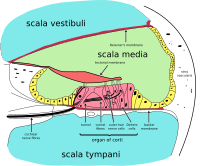
Rate-Dependent Role of IKur in Human Atrial Repolarization and Atrial Fibrillation Maintenance.
Sign Up to like & getrecommendations! Published in 2017 at "Biophysical journal"
DOI: 10.1016/j.bpj.2017.03.022
Abstract: The atrial-specific ultrarapid delayed rectifier K+ current (IKur) inactivates slowly but completely at depolarized voltages. The consequences for IKur rate-dependence have not been analyzed in detail and currently available mathematical action-potential (AP) models do not… read more here.
Keywords: atrial fibrillation; rate dependent; inactivation; human atrial ... See more keywords

Sodium Tanshinone IIA Sulfonate Prevents Angiotensin II-Induced Differentiation of Human Atrial Fibroblasts into Myofibroblasts
Sign Up to like & getrecommendations! Published in 2018 at "Oxidative Medicine and Cellular Longevity"
DOI: 10.1155/2018/6712585
Abstract: Differentiation of atrial fibroblasts into myofibroblasts plays a critical role in atrial fibrosis. Sodium tanshinone IIA sulfonate (DS-201), a water-soluble derivative of tanshinone IIA, has been shown to have potent antifibrotic properties. However, the protective… read more here.
Keywords: induced differentiation; atrial fibroblasts; tanshinone iia; fibroblasts myofibroblasts ... See more keywords

Enhanced Ca2+-Dependent SK-Channel Gating and Membrane Trafficking in Human Atrial Fibrillation
Sign Up to like & getrecommendations! Published in 2023 at "Circulation Research"
DOI: 10.1161/circresaha.122.321858
Abstract: Background: Small-conductance Ca2+-activated K+ (SK)–channel inhibitors have antiarrhythmic effects in animal models of atrial fibrillation (AF), presenting a potential novel antiarrhythmic option. However, the regulation of SK-channels in human atrial cardiomyocytes and its modification in… read more here.
Keywords: caf; human atrial; atrial fibrillation; channel ... See more keywords

In silico assessment of genetic variation in KCNA5 reveals multiple mechanisms of human atrial arrhythmogenesis
Sign Up to like & getrecommendations! Published in 2017 at "PLoS Computational Biology"
DOI: 10.1371/journal.pcbi.1005587
Abstract: A recent experimental study investigating patients with lone atrial fibrillation identified six novel mutations in the KCNA5 gene. The mutants exhibited both gain- and loss-of-function of the atrial specific ultra-rapid delayed rectifier K+ current, IKur.… read more here.
Keywords: multiple mechanisms; loss function; excitation; atrial arrhythmogenesis ... See more keywords

Electro-mechanical dynamics of spiral waves in a discrete 2D model of human atrial tissue
Sign Up to like & getrecommendations! Published in 2017 at "PLoS ONE"
DOI: 10.1371/journal.pone.0176607
Abstract: We investigate the effect of mechano-electrical feedback and atrial fibrillation induced electrical remodelling (AFER) of cellular ion channel properties on the dynamics of spiral waves in a discrete 2D model of human atrial tissue. The… read more here.
Keywords: tissue; dynamics spiral; model; model human ... See more keywords

Arrhythmogenic Effects of Genetic Mutations Affecting Potassium Channels in Human Atrial Fibrillation: A Simulation Study
Sign Up to like & getrecommendations! Published in 2021 at "Frontiers in Physiology"
DOI: 10.3389/fphys.2021.681943
Abstract: Genetic mutations in genes encoding for potassium channel protein structures have been recently associated with episodes of atrial fibrillation in asymptomatic patients. The aim of this study is to investigate the potential arrhythmogenicity of three… read more here.
Keywords: atrial fibrillation; potassium; rotor; genetic mutations ... See more keywords

Long-Term Cultivation of Human Atrial Myocardium
Sign Up to like & getrecommendations! Published in 2022 at "Frontiers in Physiology"
DOI: 10.3389/fphys.2022.839139
Abstract: Organotypic culture of human ventricular myocardium is emerging in basic and translational cardiac research. However, few institutions have access to human ventricular tissue, whereas atrial tissue is more commonly available and important for studying atrial… read more here.
Keywords: cultivation; myocardium; microscopy; physiology ... See more keywords

SAR296968, a Novel Selective Na+/Ca2+ Exchanger Inhibitor, Improves Ca2+ Handling and Contractile Function in Human Atrial Cardiomyocytes
Sign Up to like & getrecommendations! Published in 2022 at "Biomedicines"
DOI: 10.3390/biomedicines10081932
Abstract: Background: In reverse-mode, cardiac sodium-calcium exchanger (NCX) can increase the cytoplasmic Ca2+ concentration in response to high intracellular Na+ levels, which may contribute to diastolic contractile dysfunction. Furthermore, increased spontaneous Ca2+ release from intracellular stores… read more here.
Keywords: function; novel selective; atrial cardiomyocytes; inhibitor ... See more keywords